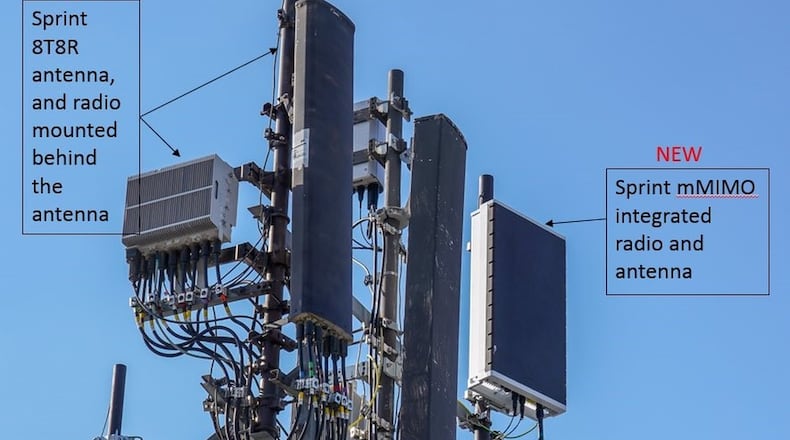MORE: Fatal Baltimore Street shooting in Dayton ruled suicide
According to Adrienne Norton of Sprint, small cell antennas and transmitter receivers would be placed on utility poles and other public structures throughout neighborhoods.
“These small cells are very important for creating a dense, high-capacity, high-speed network,” Norton said.
Andrew Rodney, city planner and zoning administrator for Centerville, said the city has passed resolutions to take a step-by-step approach to the installation of the emerging technology.
“From a permitting and design standpoint, we’ve generally adopted the regulations that were crafted by the planning staff of the City of Kettering, with some modifications to fit the City of Centerville,” Rodney said. “Many other communities in the Dayton area have modified the same set of regulations from Kettering.”
He added that as of yet, no firm plans have been submitted by any telecommunications company to install the 5G technology.
“We have yet to implement the regulations as no wireless operators have approached us to install equipment in the right-of-way,” Rodney said. “Other neighboring communities, such as Dayton and Beavercreek for example, already have small cell antennas within their jurisdiction.”
MORE: Girl involved in Amber Alert found safe
Ohio House Bill 478 permits small cell wireless facilities throughout Ohio starting in August, and Kettering is setting up its plan for 5G in accordance with state law.
Kettering Assistant City Manager Steve Bergstresser said that the city has been working to get the technology in the community.
Brian Humphress, executive director of the Miami Valley Communications Council, said society demands more and more bandwidth each day as phones, watches and other devices use internet connections almost 24/7.
“Unlike the wireless access provided by 4G, the bandwidth strength for 5G is lower, and cannot adequately provide coverage from existing towers,” he said. “Typically, the antennae must be lower to the ground (around 35 to 40 feet high) and closer to the receiver (typical range is about 750 to 1000 feet).”
He explained that communities will see more of these facilities, and they will be generally located near commercial areas and schools.
“They will be more visible to the general public due to the increased numbers and to generally being located on city or utility poles along the streets,” Humphress said. “The biggest concern with 5G construction was the potential impact on public safety and local community aesthetics.”
He said that cities across Ohio were concerned that the original state legislation would create numerous eyesores and safety concerns in their communities.
“They banded together to oppose allowing the telecommunication companies to install structures of any design or number they wanted in residential, commercial, and historical areas,” Humphress said. “Cities now have the authority to develop regulations that safeguard community aesthetics and safety while still encouraging 5G implementation.”
About the Author
